Behnaz Rafeei
Advisor: Herbert Enns
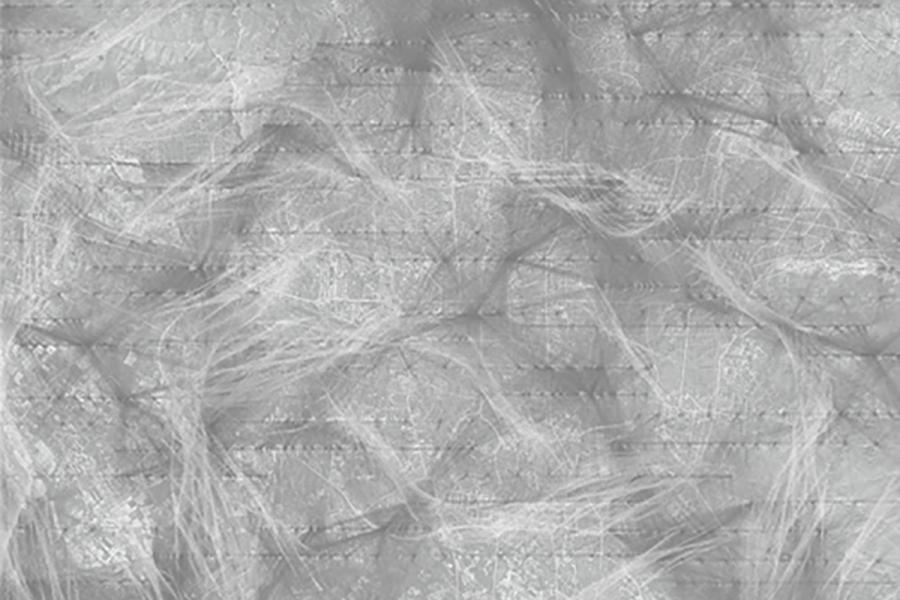

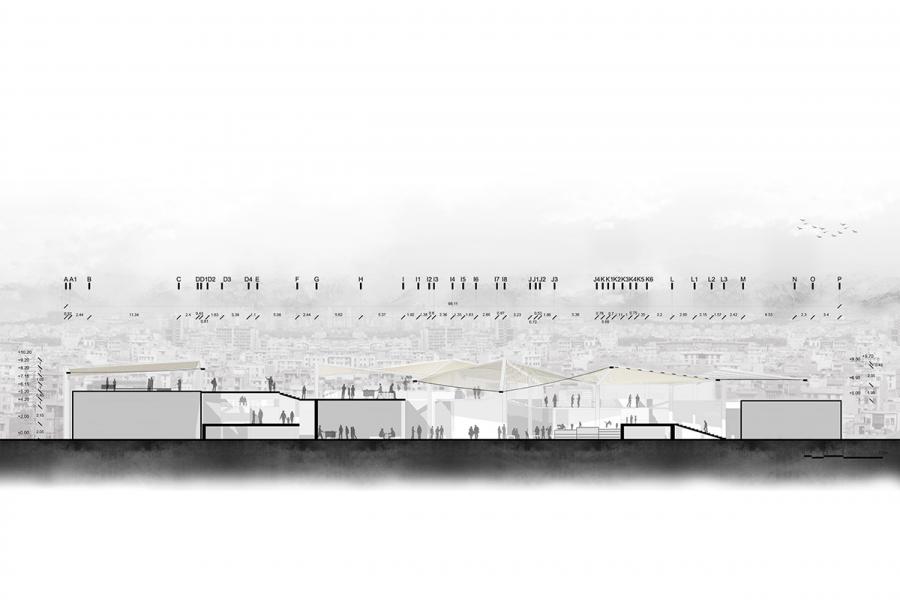
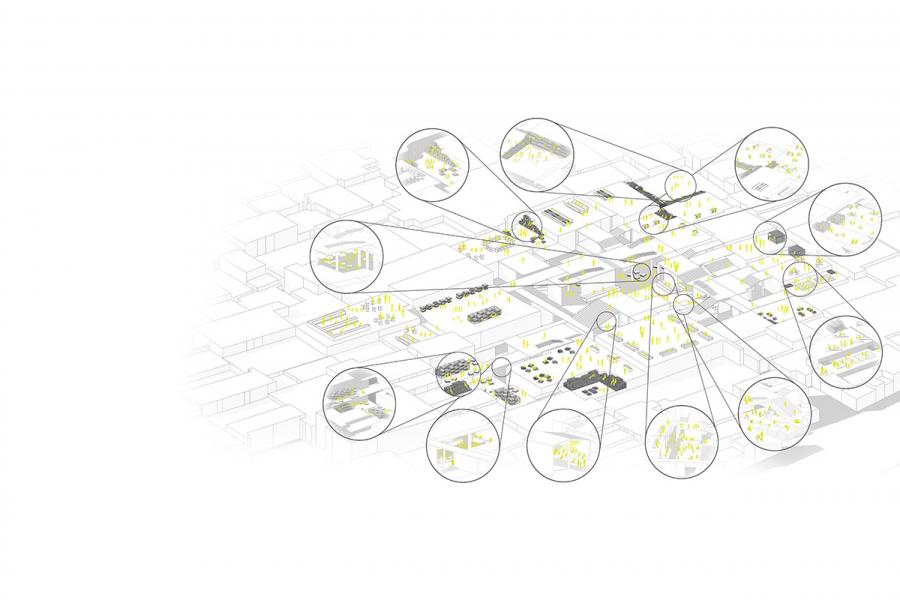
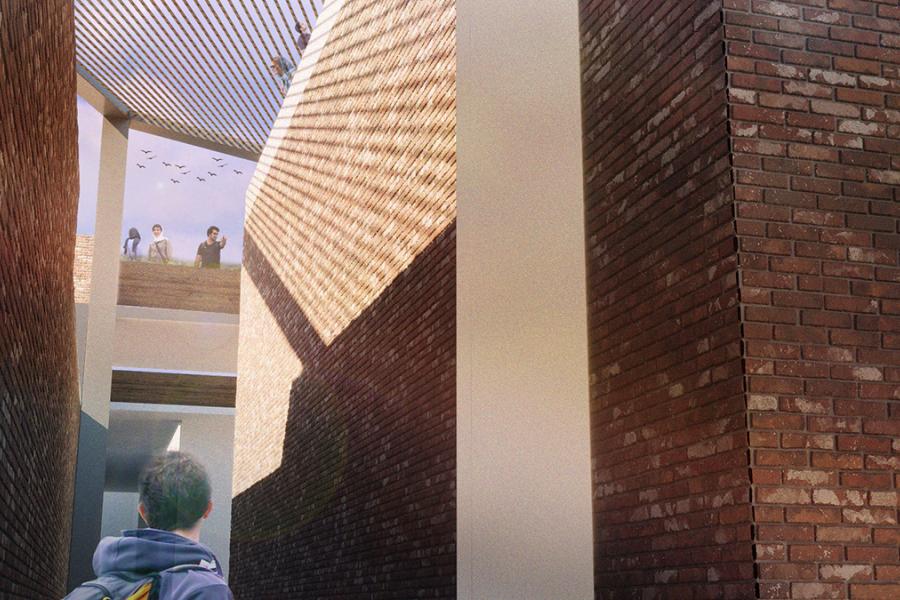
This image shows a narrow alley between two existing buildings under the proposed bridges with view to existing rooftops, proposed bridges between the rooftops, and proposed roof structure on top of the existing rooftops.
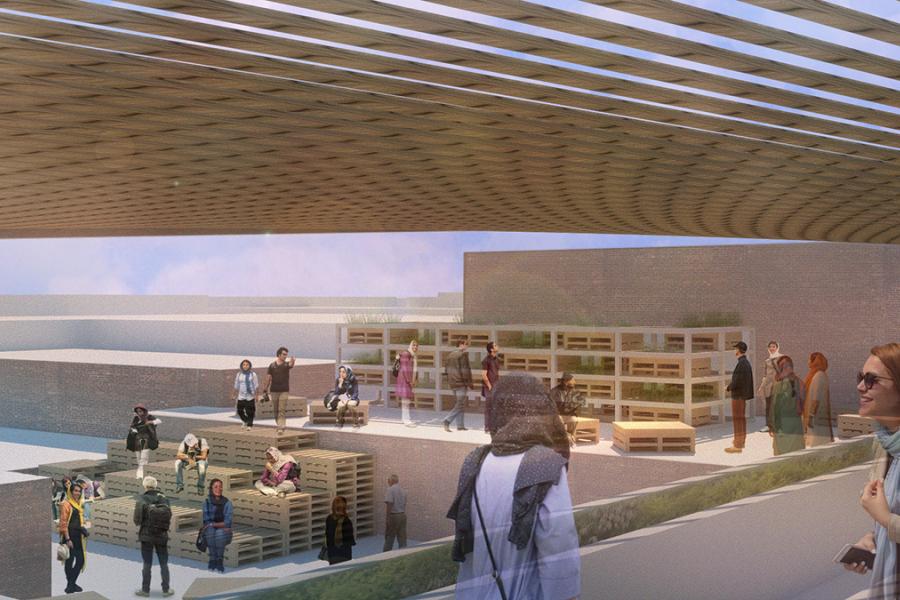
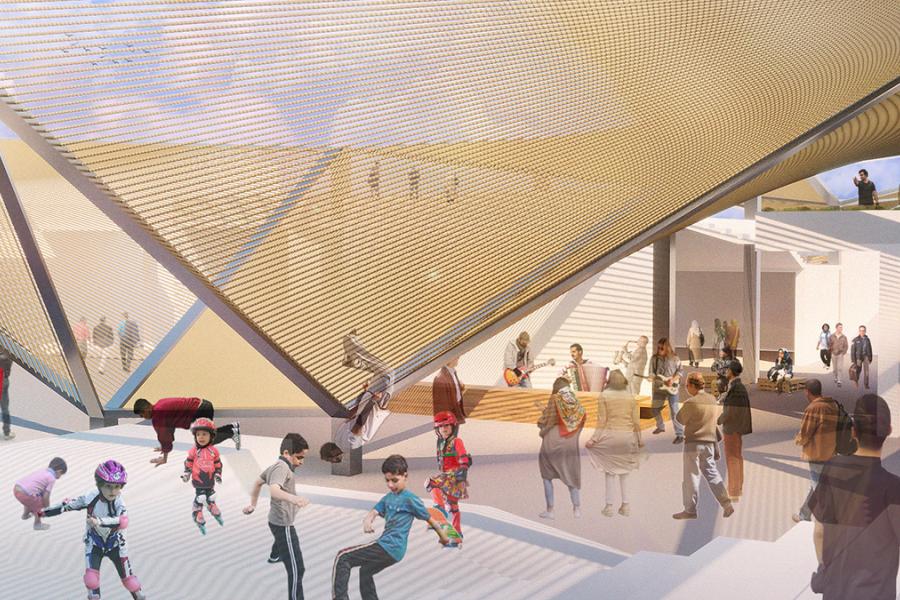
This image shows the center area of the project which is one of the most important parts of the area. People could gather, socialize, and pass their time while enjoying street music and their children are playing in the playground. They could all enjoy having fun under the proposed shading structure.
Re-thinking of public space in a changing urban context of Tehran city by re-designing unused spaces such as “ROOFTOPS”
As Hannah Ardent said, “No human life, not even the life of the hermit in nature’s wilderness, is possible without a world which directly or indirectly testifies to the presence of other human beings”. Therefore, there is always the need of social interaction in societies and public spaces are where these kind of interactions take place in cities. Public spaces are accessible to all people regardless of gender, age, or socio-economic level and they enhance the civic realm, bring greater community livability, and increase sense of belonging. But in Tehran, capital of Iran, many public spaces are not accessible to the public and they do not provide spatial needs of citizens.
Tehran is a developing megacity with a population of 9,134,708 over a surface area of 1,700 square kilometers. Due to its geographical situation and population growth, the city has nowhere to grow and therefore, it started to densify. This densification turned Tehran to a city with sky scrapers to only settle the population. Also, the main focus of most sectors specially municipality was on constructing more residential, and commercial buildings and lack of public spaces is so obvious in the city.
As Margaret Crawford said, unlike New Urbanism, Everyday Urbanism finds its meanings in everyday life. Everyday Urbanism is more concerned with people, their daily life activities, and social use of space than aesthetics.
This thesis aims to investigate new kind of public spaces in Tehran, whose distribution will match the daily life of citizens. Therefore, it is crucial to find spaces which could operate in different parts of the city and respond to the needs of diverse population. In a dense city like Tehran “ROOFTOPS” present potential sites for alternative public spaces. Connecting such unused urban areas together and creating daily life activities on the existing rooftops could raise a new breed of public space in Tehran. These new public spaces will be smaller and more local to respond the daily life activities of citizens. Also, to encourage people to bring their public life to the city and boost their sense of belonging to the city.
